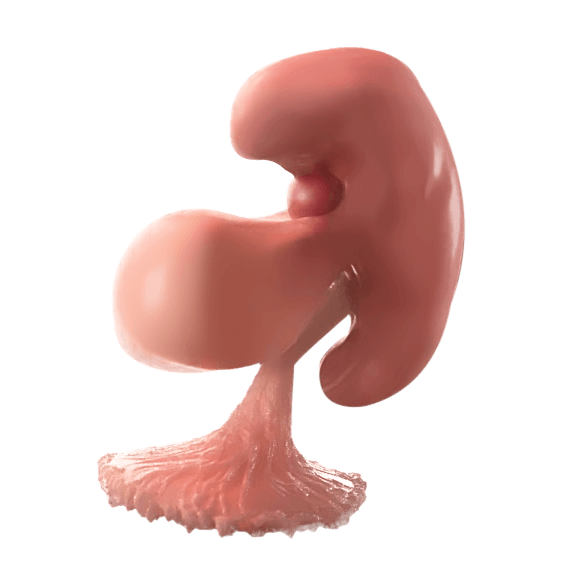At 6 weeks gestation, the embryo has a steady heartbeat around 110 beats per minute! The heart moves oxygen-carrying blood throughout the developing embryo so that it can continue to grow. Without a heartbeat circulating blood, new tissues would not have enough oxygen to survive.5
Become A Defender of Life
Your donation helps us continue to provide world-class research in defense of life.
DONATECharlotte Lozier Institute
Phone: 202-223-8073
Fax: 571-312-0544
2776 S. Arlington Mill Dr.
#803
Arlington, VA 22206

Week 6
First heartbeat and neural tube development
- Post-conception week 4
- Days 21-27
- Gestational Week 6
The changes in the embryo between the beginning and end of the sixth week are dramatic. Like rumpling a flattened blanket, flattened embryonic tissue begins folding, forming a tube that will become the brain and spinal cord. More folding forms the chest and abdominal cavities. Clusters of cells start growing in just the right locations to form the upper and lower limb buds. These buds will become the arms and legs.4
Only 22 days after conception or 5 weeks and 1 day gestation, the embryo’s heart starts beating. This heartbeat will not stop until the individual dies. Embryologists determine the age of the preborn based on fertilization, the beginning of human life. Most obstetricians, medical professionals and mothers use gestational age based on the mother’s last menstrual period. Gestational age is typically two weeks greater than embryonic age, because a woman usually ovulates two weeks after her last menstrual period. The embryo’s heart beats around 110 beats per minute at 6.2 weeks gestation, and peaks during gestational week 9 at over 170 beats per minute. 6 The heart beats about 54 million times between conception and birth.7
Doctors use a variety of methods to listen to the fetal heartbeat. At first, the sound and motion from the heart is barely detectable. Doctors use ultrasound technology to see the motion of the heart in early pregnancy. Starting at 12 weeks, many doctors will use a Doppler fetal monitor to check the fetus’s heart rate.8 A fetal Doppler monitor uses the motion of the blood within the heart to make an audible signal and measure the heart rate.
Just 22 days after conception or 5 weeks and 1 day gestation, the neural tube starts to close. Folds of neural tissue fuse together, starting in the neck area, continuing towards the head and rump. The neural tube becomes the brain and spinal cord. The brain finishes fusing by the 25th day, and the bottom of the spinal cord finishes fusing by the 28th day. The brain grows in three sections: the forebrain, midbrain, and hindbrain.9 The forebrain is responsible for sensing, decision making, and forming memories; the midbrain is responsible for localizing sounds, moving, and tracking objects; and the hindbrain is responsible for vital body functions. Later in development, pain processing occurs in all three sections of the brain.10
Doctors can count the number of small bumps along an embryo’s back to accurately estimate her age. The bumps are called somites and first appear 20 days after conception. The number of somites present in the embryo in the following week can be used to give an exact age. For example, at 22 days the embryo has 7 distinct somites, while by day 28 there are about 25 somites. As somites mature, they form bones and muscles.11









